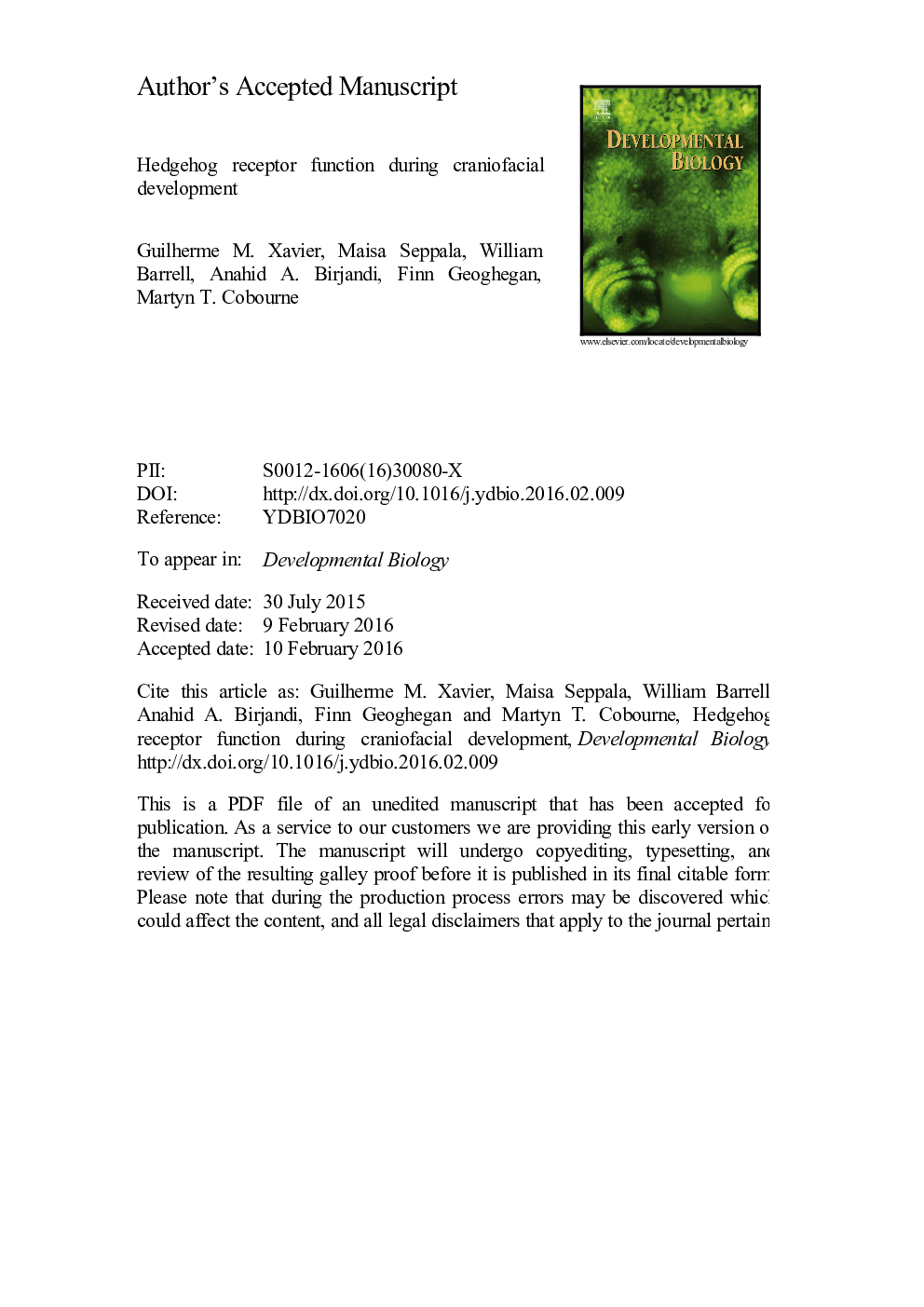| کد مقاله | کد نشریه | سال انتشار | مقاله انگلیسی | نسخه تمام متن |
|---|---|---|---|---|
| 10931106 | 1093614 | 2016 | 60 صفحه PDF | دانلود رایگان |
عنوان انگلیسی مقاله ISI
Hedgehog receptor function during craniofacial development
دانلود مقاله + سفارش ترجمه
دانلود مقاله ISI انگلیسی
رایگان برای ایرانیان
کلمات کلیدی
موضوعات مرتبط
علوم زیستی و بیوفناوری
بیوشیمی، ژنتیک و زیست شناسی مولکولی
بیولوژی سلول
پیش نمایش صفحه اول مقاله

چکیده انگلیسی
The Hedgehog signalling pathway plays a fundamental role in orchestrating normal craniofacial development in vertebrates. In particular, Sonic hedgehog (Shh) is produced in three key domains during the early formation of the head; neuroectoderm of the ventral forebrain, facial ectoderm and the pharyngeal endoderm; with signal transduction evident in both ectodermal and mesenchymal tissue compartments. Shh signalling from the prechordal plate and ventral midline of the diencephalon is required for appropriate division of the eyefield and forebrain, with mutation in a number of pathway components associated with Holoprosencephaly, a clinically heterogeneous developmental defect characterized by a failure of the early forebrain vesicle to divide into distinct halves. In addition, signalling from the pharyngeal endoderm and facial ectoderm plays an essential role during development of the face, influencing cranial neural crest cells that migrate into the early facial processes. In recent years, the complexity of Shh signalling has been highlighted by the identification of multiple novel proteins that are involved in regulating both the release and reception of this protein. Here, we review the contributions of Shh signalling during early craniofacial development, focusing on Hedgehog receptor function and describing the consequences of disruption for inherited anomalies of this region in both mouse models and human populations.
ناشر
Database: Elsevier - ScienceDirect (ساینس دایرکت)
Journal: Developmental Biology - Volume 415, Issue 2, 15 July 2016, Pages 198-215
Journal: Developmental Biology - Volume 415, Issue 2, 15 July 2016, Pages 198-215
نویسندگان
Guilherme M. Xavier, Maisa Seppala, William Barrell, Anahid A. Birjandi, Finn Geoghegan, Martyn T. Cobourne,